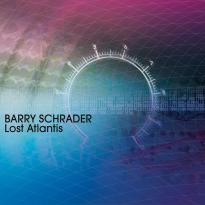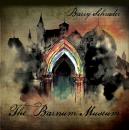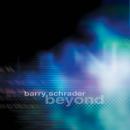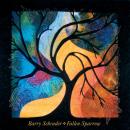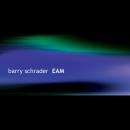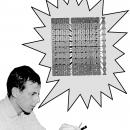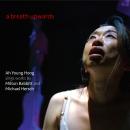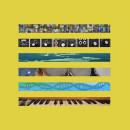Lost Atlantis
Lost Atlantis
Atlantis, Greece
| Lost AtlantisiTunes Artist's PageiTunes Album Page | |||
|---|---|---|---|
| Song Title | Time | Price | |
| 1. | Trinity | 15:17 | |
| 2. | Lost Atlantis: Introduction: The Pillars of Hercules - the Great Harbor | 06:09 | $0.99 |
| 3. | Lost Atlantis: The Gardens of Cleito | 06:28 | $0.99 |
| 4. | Lost Atlantis: The Temple of Poseidon - the Dance of the Gods | 07:50 | $0.99 |
| 5. | Lost Atlantis: The Gathering of the Kings - the Hunting of the Bulls | 06:46 | $0.99 |
| 6. | Lost Atlantis: The Mystery Rites of Purification | 04:14 | $0.99 |
| 7. | Lost Atlantis: The Destruction of Atlantis - Epilogue | 08:20 | $0.99 |
While Lost Atlantis uses Plato’s account of the Atlantis legend as programmatic background, the music itself is concerned not so much with specific portrayals of places or events but rather with interpretations of impressions. In a more personal sense, Atlantis is the past that never was and the future that can never be. I believe that my reasons for composing Lost Atlantis are best expressed by the words of the poet Robert Lowell: “I want to make something imagined, not recalled.”
THE LOS ANGELES TIMES
Barry Schrader's Lost Atlantis reveals Schrader as a composer born to the electronic medium. He paints with veiled and mysterious tone colors, creates descending sine-tone scales of exquisite delicacy and spins out dramatic crescendos climaxing in peaks of brassy brilliance. He generates sequenced rhythms with various percussive envelopes: woodlike clacks, hollow drum sounds, giant xylophones and steel drums.
By Philip Springer
SPLENDID MAGAZINE
Schrader's setup generates an admirably rich cloud of shimmering, metallic sound that can drift along gaseously, build into an intimidating clatter, morph into percussive thuds and clicks, or even hazily approach a tonal center
By Matt Pierce
One final perspective that occurs to me is that these works, though they have and will likely continue to age very well, sound full of the DNA of a single, virtuosic individual—a Californian in the mid-seventies fresh off muttonchops. Obviously that is very cool. This music is sublime, and it would not be surprising if Barry Schrader hears on this CD today pretty nearly what he intended to put down
By Ted Coffey
ALL MUSIC GUIDE
Few are the composers who truly mastered Buchla1s innovative instruments and the quadraphonic electroacoustic repertoire has been all but lost, so this CD is a very welcome release, both in terms of music history and listening enjoyment, for these two works remain fascinating, regardless of how they were conceived… The music is imbued with mystery, its reliance on non-melodic material empowering it with an ageless appeal that could as well be ancient. Schrader makes use of a wide palette of tones and textures, and his sense of space and drama create a mysterious place in which the listener is eager to loose himself or herself. Recommended.
By Francois Couture
PARISTRANSATLANTIC.COM
The Electric Music Box, aka the Buchla 200 Analog Modular Synthesizer, and the quadrophonic hi-fi systems that were sold to play the music created on it, are about as hard to find these days as the mythic continent Plato describes in his Critias. "I sometimes think that much of this music of Californian counterculture in the 70s simply vanished when Quad was abandoned," writes Gary Chang, who has painstakingly remixed and remastered the four track originals of these two monumental works by Barry Schrader. Both "Trinity" (1976) and "Lost Atlantis" (1977) were recorded in Studio B303 in CalArts, where Schrader has been teaching since 1971 (there's a cracking photo of him in a pigsty on the CalArts Faculty Website), using the venerable Buchla machine and four additional "Fortune modules" specially designed by Yamaha engineer Fukushi 'Fortune' Kawakami . Analog synth buffs and youngsters whose idea of electronic music is loading up a soundfile and clicking nonchalantly on some nifty program called Munch or Scrunch will enjoy the flowcharts and circuit diagrams, but what about the music? Schrader gives the game away a little when he writes that "Trinity" was "composed in rondo – variations form".. one would like to think that with patience and plenty of imagination both of these pieces could be successfully scored for symphony orchestra without compromising their structural or harmonic integrity (though of course they couldn't – the Buchla machine's timbral sophistication is far too complex to be imitated with any accuracy by conventional instrumental forces) – they feel orchestral, or at least symphonic (as opposed to the more consciously experimental "pure electronics" of Albert Mayr.. see above). There's a great sweep to Schrader's work that puts it more in line with ambitious large-scale electronic works by the likes of Stockhausen ("Hymnen"), Eloy ("Shanti") and Henry (take your pick), a line that can be traced backwards to Mahler, Bruckner and Beethoven. I'll bet Ludwig Van would have loved the Electric Music Box.—DW
By Dan Warburton
TOKAFI
There is a “gramophone magatzine” quote on Barry Schrader, which might seem a bit odd at first: “Schrader’s electro-acoustic music appeals to both the ear and the mind.” What’s so strange about this is that a critic should mention it – after all, isn’t that what almost every composer sets out to do? In Barry’s case, however, it is definitely worth an exclamation mark, if only for the manyfold prejudices (or sheer ignorance) against the genre he is operating in. And besides, as “Lost Atlantis” proves, every single word of it is true. This is one of the releases, which are not just mere byproducts of market economy, but actually a lot more than their simple packaging suggests. “Lost Atlantis” collects two early works, brings in film music composer/sound engineer and self-proclaimed Schrader-fan Gary Chang for some masterful remastering and adds some highly informartive liner notes in the extensive booklet. As Chang points out, he was there in 1976, when “Trinity” was premiered live at the Vanguard Theater and totally blown away by its combination of pride in its purely electronics nature and yet deeply-rooted connection with the (post-)romantic masters of the past, such as Mahler or Bruckner. For a long time, the only available copy was a tape handed to Chang by Barry himself, which naturally wore out over the years. In the decades which followed, Schrader was as active as ever and it can only be put down to an apparent distaste for self-promotion and marketing mechanisms (which he shares with a few of hgis generational colleagues, such as Richard Lainhart) that it has taken so long for this music to be published. Still today, the caleidoscopically swirling whirlwind, arranged in a rondo form and ceaselessly permutating, tramsforming, mutating and juxtaposing within itself has lost nothing of its immediate appeal. The same goes for the almost fourty minute long, seven-part title track. Here, the nuances of Schrader’s language become even clearer: Romantic, but always slightly opaque visions sway between major and minor, concrete and abstract as well as between sound and structure, rise from silence to frenzied outbursts and pandemonious sequences of lightning-speed tremolos and arpeggios. There is constant flux between the beautiful and the brazen, the delicate and the dirty, the feminine and the muscular and it is this endless interplay which lends a decided dramaturgy and dynamic to his works. Gramophone goes on to write: “[It is] approachable electronic music with a distinctive individual voice to reward the adventurous.” That, too, is true. There is even a sense of overt emotionality, untypical yet highly refreshing for the often pretty scientific electronic scene. To complete the quote from the very beginning: Schrader’s music pleases the ear, the mind and the heart.
By Tobias Fischer
COMPUTER MUSIC JOURNAL
Mr. Schrader is hardly a composer who can be criticized as employing the color "blue." His compositional palette incorporates azure, cerulean, indigo, sapphire, and other equally provocative shades. Barry Schrader’s music is crafted with infinite patience, critical attentiveness, and meticulous listening. In adhering to these ideals, this music withstands the test of time and stands uniquely in the American electronic music genre.
By Elainie Lillios
